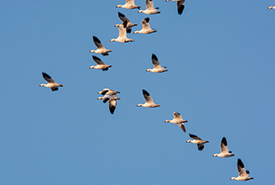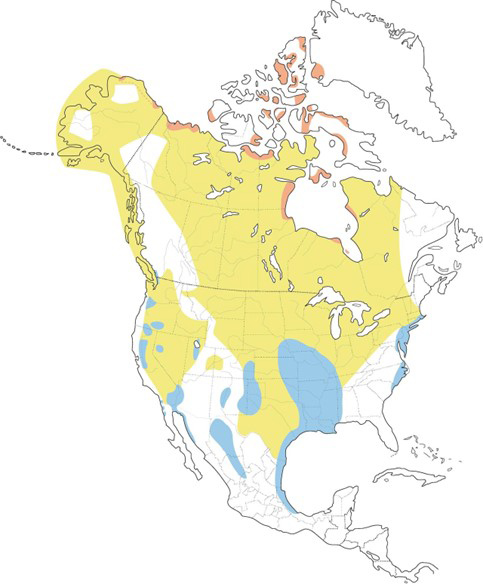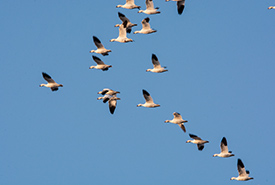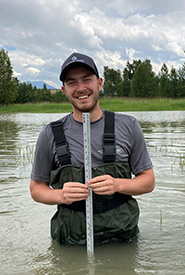NCC: Land Lines – My journey with the majestic snow geese: Unveiling climate change clues in Canada

Snow geese (Photo by Leta Pezderic/NCC staff)
I’ve always been captivated by Canada’s diverse landscapes. They boast not only breathtaking beauty but also a rich diversity of bird species, especially remarkable waterfowl. The annual migrations of these birds are more than just natural spectacles; they’re like hidden messages from nature about climate change. Among these avian travellers, snow geese stand out, as they grace the Canadian sky with their awe-inspiring journey and offer us crucial insights into the impacts of climate change on Canada’s ecosystems.
The epic migration
Imagine the scene: As the seasons shift and the Arctic tundra readies itself for winter’s icy embrace, a remarkable journey begins. It’s the time when snow geese embark on their transcontinental trek. These magnificent birds, adorned in pure white plumage, call the Arctic their breeding grounds. The far reaches of Canada, including the Arctic Coastal Plain and the Queen Maud Gulf Migratory Bird Sanctuary, are their homes.

Snow geese range map (Map by Cornell Lab of Ornithology)
As fall sets in, the skies witness an incredible spectacle: flocks of snow geese numbering in the tens of thousands take flight, signalling the impending harsh weather. What follows is a journey of over 3,000 kilometres, a true adventure that spans diverse landscapes and habitats. It’s a display of collective wisdom as they navigate through varying terrains, all guided by an innate sense of direction and the shared knowledge winthin the flock.
Climate change clues
Snow geese, resilient and adaptable as they are, are not untouched by the effects of climate change. Their annual migration carries with it vital insights into the changing world around us. One of their greatest challenges lies in the alteration of their primary food sources — the vegetation in wetlands and other habitats that mark their migratory route.
With temperatures on the rise and weather patterns in flux, the timing of plant growth is thrown off, affecting the availability of nourishment for the geese. As they arrive at their pit stops or wintering grounds, they must quickly adjust to changing food supplies. This can lead to shifts in their migration patterns, behaviours and even the routes they take.
Also, the shifting environment caused by climate change might impact the quality of the habitats they depend on during their journey. The degradation of wetlands and other critical sites can hinder their ability to rest, feed and rejuvenate during their arduous voyage.
The responsibility ahead
The snow geese journey isn’t just a spectacular natural event; it’s a poignant reminder of how interconnected different species and ecosystems truly are. As we bear witness to their graceful flights and steadfast migrations, it’s a stark call to action to tackle the impacts of climate change.
Safeguarding the habitats crucial to their journey becomes a pressing responsibility, both in their Arctic breeding homes and along their migratory routes. Protecting wetlands and resting areas and working to counteract the human-induced factors driving climate change, are all pivotal measures to secure the ongoing success of snow geese and the delicate balance of the ecosystems they touch.
Reflecting on the journey of snow geese soaring across Canada’s skies, I’m reminded of the delicate beauty and vulnerability of our natural world. These elegant travellers not only steal our hearts with their flights but also offer us a unique lens into the evolving climate. By protecting their habitats and addressing the challenges posed by climate change, we’re not only ensuring the survival of these majestic adventurers but also taking significant steps toward preserving Canada’s intricate ecosystems for generations yet to come.





